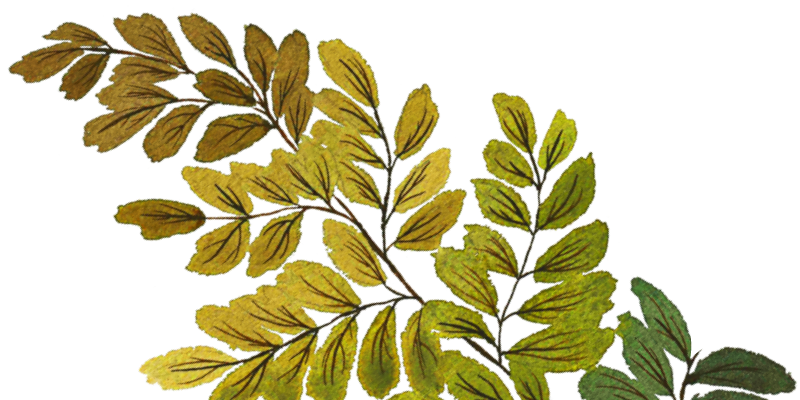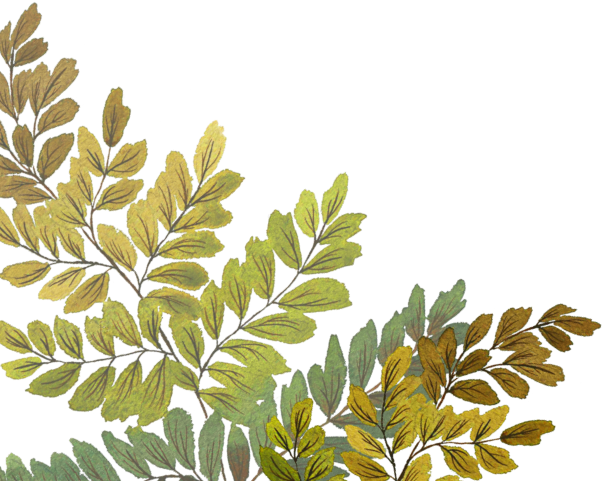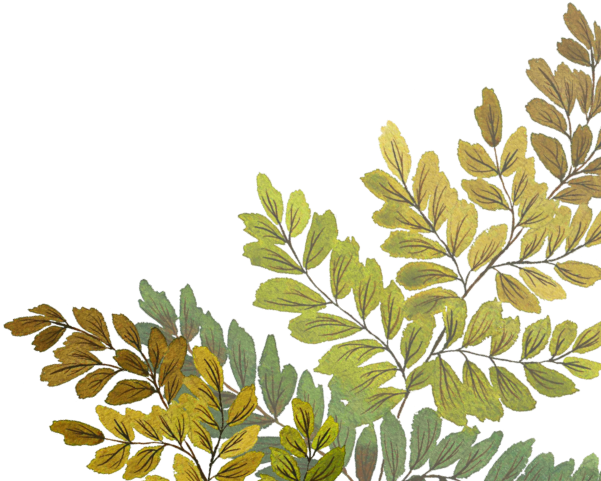In 1974 a metal sphere was discovered on a prominent family’s property in Jacksonville, Florida.
What at first was a mere curiosity soon seemed more otherworldly as, witnesses say, it rolled around on its own. A media frenzy erupted as the ball sparked interest from the Navy and nationally renowned scientists. The obsession with the mysterious ball ultimately silenced the family.
Note: Odd Ball is produced and designed to be heard, not read. We highly recommend listening to the audio. The audio contains tone and emotion that are not included in the transcript. Transcripts are created using speech recognition software and human transcribers, but it may contain errors. Please verify with the audio before using any quotes in print.
[Promo]
Odd Ball is made possible by supporters of WJCT Public Media with additional support from Bold Bean Coffee Roasters. While this podcast might be a mystery, Bold Bean’s coffee isn't. Ethically sourced beans are roasted to highlight their origin characteristics and natural sweetness. So when you order that latte, you're supporting transparency and quality at every step of the coffee chain. Bold Bean. Sourcing, roasting, brewing, and, serving outstanding coffee.
Lindsey Kilbride:
The year is 1974.
[montage of archive sound:]
[Cadillac ad:]
“Cadillac leads with the greatest choice in the luxury field.”
[Mister Rogers’ Neighborhood:] singing
“It’s a beautiful day in this neighborhood.”
[President Richard Nixon:]
“Throughout the long and difficult period of Watergate, I felt it was my duty to persevere.”
Lindsey Kilbride:
And in Jacksonville, Florida, a family finds this weird silver-colored ball near their house.
[Archive news tape:] [male anchor:]
“The Betz family found the ball in a wooded area north of Heckscher Drive two weeks ago and have been trying to figure out what it is ever since. Navy ordnance experts picked up the ball this morning but not before signing a receipt. In fact, Mrs. Betz is so concerned, she's considering insuring the ball with Lloyds of London.”
Lindsay Kilbride:
What? That one doesn't ring a bell.
From WJCT Public Media in Jacksonville, this is Odd Ball, a story about a UFO investigation, a mansion in the woods, and how one shiny object silenced a family. I'm Lindsey Kilbride.
In the middle of April 1974, headlines started popping up in newspapers all over the country about this heavy silver sphere a Jacksonville man found in the woods. It was about the size of a bowling ball and would roll around seemingly with a mind of its own. Today, there's still no consensus as to what the ball was, where it came from, or even who has it today. And it's not easy to get some of those answers because the family has been mostly silent over the last few decades. So why was it never IDd? And where did it come from? Can we put this mystery to rest? I'm going to try.
Ron Kivett: “These are just some photographs. This is a photograph of the ball itself, the mystery sphere.”
Lindsay Kilbride:
I start off talking to Ron Kivett, who photographed the ball shortly after it was found. He's pulling out lots of pictures of the ball from this manila folder he brought.
Lindsay Kilbride:
“And this is you with it?”
Ron Kivett:
“Yes.”
Lindsay Kilbride:
Ron used to have some very on-trend, long sideburns. But most of these photos are close ups of the sphere. It's a metal ball covered in scratches, a little smaller than a standard bowling ball by about a half-inch. He has the ball set up on this mini pedestal against a backdrop of what looks like red velvet.
Lindsay Kilbride:
“Where did you set this up?”
Ron Kivett:
“At their house. At the Betz property.”
Lindsay Kilbride:
In ‘74, Ron was hosting a local radio show, which was called Tales of Strange Things.
Ron Kivett:
“And we talked about UFOs, we talked about ghosts and flying saucers and all kinds of things like that. And periodically, some of my listeners would call in and say, ‘Oh, Ron, have you seen this?’ or, ‘Have you heard about this?’ And they’d give me a tip on something, and I'd go out and investigate it. One of my listeners called up. He said, ‘Ron, have you heard about this thing that they found up—’ and he was kind of saying, you know, it's this big ball of some kind, and I said, ‘OK, well, you know, I'll check it out.’
Lindsay Kilbride:
A lot was reported about this sphere in a really short amount of time. I'm not sure if the family reached out to reporters first, but somehow word got out. There's a weird ball in town. The local newspaper, The Florida Times-Union, has a folder full of articles about this ball, like a really thick folder. The earliest story I could find in their archive is dated April 11, headlined “Bizarre Sphere is Castle’s Latest Mystery Happening”— ‘castle’ because the family that found the sphere lived in a really big house. The photo accompanying the story is of 12-year-old Wayne. That's one of the family members. He's cupping his hand around the side of the sphere, kind of like it's a crystal ball or something.
This is what's in those first reports, what Ron knew before checking it out:
Terry Matthews is credited with finding the ball. He was a 21-year-old pre-med student with shoulder-length, dark hair, and a mustache curling down the sides of his lips. Depending on the article, it was late March early April when he went on a walk and found the sphere lying on the ground in the woods on his family's property in the Fort George Island area of Jacksonville, a place surrounded by the St. Johns River, some creeks and a lazy beach nearby, a pretty isolated area today — even more so back then. The family owned lots of land around there. So Terry brought it inside and didn't think much of it. Then some days after, there appeared to be more to the sphere. Terry's mom Gerri Betz ends up being the family spokesperson in all this, being the person who reporters interview. She's the matriarch of the Betz family, six kids and her husband Antoine, a marine engineer.
Gerri tells reporters the ball started vibrating some days after her son brought it inside, and when the ball was placed on a table, it would roll around the edges and wind up in in the middle, it was rolling in a straight line, it would suddenly veer. If someone rolled the ball, it would stop and return toward the person, only to stop a short distance from them and vibrate. Once, while a television crew was at the house, Gerri said the family's toy poodle was placed next to the ball to indicate its size, and the dog started whimpering and covering her ears with her paws.
Then somehow the Navy became interested in the ball and decided to examine it. If you're not familiar with Jacksonville, it's a pretty big military town. But this seems like a really big deal that the military would be concerned with the ball, which is one reason I'm so interested in the story. I don't know how it got on the Navy's radar. My best guess is all these news reports.
Then the same month, several UFO investigators got their hands on the ball too. Still, no one was able to ID it other than saying maybe it was a piece of industrial machinery. At least 26 unique stories about the ball were published across the country between April 1974 and October 1975, so it's not surprising Ron, that radio host, also wanted to take a look.
Ron Kivett:
“Here are some other photographs of it, and those are some photographs of UFOs I took out over the beach in Fernandina [trails off]”
Lindsay Kilbride:
That was difficult to understand. He also brought along photos of some orbs in the sky. OK, so Ron is really into this stuff: UFOs, fantasy, sci-fi. He wrote two science fiction books, The Warrior King being his latest, and he even co-wrote the 1971 movie Zaat.
[Zaat movie trailer:] “One of the most incredible stories of modern time, Zaat. Invasion of the walking catfish.
Lindsay Kilbride:
Zaat was filmed partly in green Cove Springs, Florida. The trailer is on YouTube and it's pretty amazing.
[Zaat movie trailer continues:] “An entire town goes berserk in a rampage of death and violence.”
Lindsay Kilbride:
Anyway, after Ron caught word of the ball from one of his callers, he contacted Gerri about wanting to take pictures of it. And she said, ‘All right, come over.’
Ron Kivett:
“The ball was sitting on a glass-top table in with no edge on it, you know, the glass was just a sheer-cut piece of glass. And I was really surprised, like you said, to see as many scratches on it. I was expecting this pristine looking, you know, thing like you see the science-fiction movies, but it looked like it was well used. And so we talked about it, and you know, how they found it, what, you know, all of those things. And I said, ‘Well, you know, I'd like to get some pictures of it.’ And I said, ‘Well, you know, let's go outside where we got plenty of good sunlight, and we'll find a place out there.’ So we all got up and started to go outside and I was the last one out. And as I was going out, the ball rolled from the center of the table, all the way to the edge. It stopped.”
Lindsay Kilbride:
“And was that the first time you had seen it do anything to do anything?”
Ron Kivett:
“I hadn’t seen it do anything. And it was almost like, ‘Hey, don't forget me.’ So we picked it up, took it outside with us. You know, I heard about it moving. You know, they told me that it had moved across the carpet and things like that. But to think that it actually did that all by itself, and the fact that it didn't roll off of the edge of the table — you know, if somebody would have pushed it or nudged it or something like that, it would have gone all the way off.”
Lindsay Kilbride:
“So when you held the ball, what were some characteristics that you personally experienced?”
Ron Kivett:
“First of all, the ball was heavy and when you when you held it, if you tilted it just a little bit one way or another, you can hear a very slight tinkle coming from inside the ball. If you've ever picked up a broken glass, like you break a glass in the kitchen and you you're picking up the pieces and you're throwing them back into the sink or something, you hear that little tinkle the glass makes? That's what it sounded like. It sounded like this little tinkling sound was coming from inside the ball.”
Lindsay Kilbride:
“Did it feel like anything was moving in there?”
Ron Kivett:
“I did not feel any movement.”
[Archive news tape]
“…in the area north of Hecksher Drive in the Spring Hammock area. That was two weeks ago. Since then they've tried to find out what it is. There have been suggestions ranging from a giant ball bearing to an object from outer space.”
[Gerri Betz in archive tape] “I don't know. It probably has a very simple explanation. But so far, I haven't found anyone that can give me one.”
Lindsay Kilbride:
That's Gerri. After the news broke the Betz’s household phone was ringing at all hours. And a few of those calls were from Ron, the guy who took those pictures.
[phone ringing]
Lindsay Kilbride:
I guess this is what phones used to sound like.
[Recorded phone call]
“…from WIVY…”
Lindsay Kilbride:
Before Ron met with Gerri at her house, he interviewed her over the phone twice. Even with some serious restoration, these interviews are pretty hard to understand.
She tells Ron the ball is like a gyroscope, which is also what she tells news reporters. And my best description of a gyroscope is a spinning object that can appear to defy gravity and moves in interesting ways. Anyway, she says if you shake the ball vigorously and put it down, there's motion inside. And it sounds like when a defunct light bulb is shaken.
She says she was with her son Terry in the woods when he found the ball, and she doesn't remember if there was any marking or indentation on the ground beneath it because it was cold out, it started raining, they wanted to get back home. She said the ball’s vibrating and quivering started after about two weeks when Terry was tuning his guitar. She tells Ron she's in the process of getting the ball insured.
She said the scratches on the outside of the ball look like a starburst under a magnifying glass. There's also a little triangular-shaped chip out of the side of it, and the ball is magnetic.
Lindsay Kilbride:
“Do you have a personal hypothesis of what the ball is?”
Ron Kivett:
“Over the years there have been other things that have come from UFO investigations that indicate that the alien people have a way of making these autonomous devices that can go out and gather information and then return and deposit that information somewhere else. And I believe that the ball was one of those kinds of devices.”
Lindsay Kilbride:
“Some people would think, well, you're you've been into this since you were a kid, you've written scripts. Like, you love this stuff. Does that influence, sort of, you know…”
Lindsay Kilbride:
This is me nervously asking Ron if his interest in UFOs and sci-fi means he's biased toward believing the sphere was a UFO.
Ron Kivett:
“Yeah, yeah. I agree with their argument. I don't agree that is true. But I agree with where they were coming from.”
Lindsay Kilbride:
“What would your response be to…?”
Ron Kivett:
“— you weren't there. That's the biggest thing I could say. You weren't there. You didn't talk to these people. You can sit back in your, you know, overstuffed chair and surmise all you want. But have you ever seen one?”
Lindsay Kilbride:
“I want to point out here he's not saying the Betzes believe the ball was extraterrestrial. But he said his attitude on all of this goes back to when he was a kid living in rural Indiana.”
Ron Kivett:
“And you'd be in the feed store and you'd hear the farmers talking about, ‘Well, did you hear what happened last night?’ You know, ‘Did you see these things that were in the sky Wednesday night?’ you know, and stuff like this. And I knew most of those people. And they weren't the kind of people who were going to make up stories. They wanted to know what the hell was going on.”
Lindsay Kilbride:
Ron believes he's pretty good at detecting BS because of the type of radio show he had. He said people would call in with made-up stories, and he could tell, but he didn't get that vibe from Gerri Betz or her family when they told him about the sphere’s strange behavior.
Ron Kivett:
“I never got the feeling that they were being untruthful or that they were trying to pull my leg or anything like that. I never got the feeling that they weren't telling me the honest truth.”
[music fades out]
Lindsay Kilbride:
“Hello, Melissa.”
Melissa Ross:
“Hi. Hey.”
Lindsay Kilbride:
So I started working on this podcast a couple summers ago. My coworker at WJCT, Melissa Ross, host of First Coast Connect, told me about the sphere.
Melissa Ross:
“I was watching a show called Ancient Aliens one night with my kids.
Lindsay Kilbride:
“Are you a big Ancient Aliens watcher?”
Melissa Ross:
“I have watched it with my kids mainly. They like to watch it to make fun of it, and I find that really entertaining. And all of a sudden they started talking about this weird UFO case in Jacksonville, Florida, that involved this big, silver sphere. And I hadn't ever heard about it, which I thought was strange because I thought I knew all of the kinds of stories odd stories about Jacksonville, having lived here a while now, but I'd never heard of this.”
Lindsay Kilbride:
Having lived in the area my whole life. I hadn't heard of it either. And neither had pretty much anyone else I asked. But some people do remember the stir it caused back then. A photo journalist at The Florida Times-Union newspaper, Lou Egner, was assigned the story. He's since passed away, but I got in touch with his daughter, Susan.
Susan Egner:
“Even as a teenager, I would not have missed dinner because he always had something to say if, if not to bring home somebody to join us for dinner, quite often a celebrity. So it was really an interesting life as a kid of a photojournalist, what kind of celebrities — he brought Bob Hope home and Johnny Carson and Lee Trevino and…”
Lindsay Kilbride:
“Wait, what? Really?”
Susan Egner:
“At that time he was the head of the photography department, so he was in charge of celebrities, and my dad felt that anybody would want to come home and eat my mother's cooking.”
Lindsay Kilbride:
Susan's dad is actually quoted in a few articles about the sphere as being a witness to its strange behavior.
Susan Egner:
“I must have been home visiting. And that's how I must have heard about it is when I was home, and probably my sister was there at the same time because she still lived in Jacksonville. And we do remember hearing about how it moved in different directions, and then came back. We do remember that.”
Lindsay Kilbride:
“And do you remember your dad saying that he personally witnessed it?”
Susan Egner:
“Yes.”
Lindsay Kilbride:
In a Palm Beach Post story headlined “Mystery Sphere a Bug from Outer Space?” it said Lou Egner showed up to the family's home on assignment, skeptical. “I'm leery of this kind of thing.” he's quoted saying. “When I got there, Mrs. Betz said, ‘You won't believe this if you don't see it.’ She told me to put it on the floor and give it a push. It rolled away and stopped. So what? She said, ‘Just wait a minute.’ It turned around and rolled to the left about 8 feet, made a big arc and came right back to my feet.”
In a Florida Times-Union article, Lou describes the ball as “the darndest thing I ever saw. It seems to have a life of its own.” The next day the paper published another story headlined “Odd Ball Remains Mystery” where it claims its photographer Lou Egner watched the ball go through a series of weird wanderings, seeming to move on its own and also halting and vibrating.
Lindsay Kilbride:
“Do these all sound like things he said about it?”
Susan Egner:
“Yep. And where he said, ‘It's the darndest thing I ever saw,’ that sounds like him. Him saying he was ‘leery,’ That's an odd word that I guess he might have used if he's been quoted there. But when you said, ‘It the darndest thing I ever saw,’ that sounds exactly like my dad.
Lindsay Kilbride:
“And you said he's curious, but… is he the kind of person who would just sort of buy into the fun of this or do you think he really felt like, ‘Well, this is very weird.’”
Susan Egner:
“Well, that's kind of a tricky question, because my dad was really full of — he was sort of mischievous. He loved things that were intriguing. So I'm sure that he would be totally intrigued by something like this.”
Lindsay Kilbride:
“And so did you believe him? That he saw it do these things?”
Susan Egner:
“Yeah, why wouldn't I? He wouldn't fabricate a story because he has too many real stories that you can tell. So I don't think he would fabricate something. He obviously witnessed it.”
Lindsay Kilbride:
After the break, one of the Betz family members sends me an email.
[Promo:]
This podcast is made possible by supporters of WJCT Public Media with additional support from Bold Bean Coffee Roasters. Eight years ago, Erin Lee saw a new coffee shop was opening up in Jacksonville and she applied.
Erin Lee:
I just have always gravitated towards people. Getting to be the start of someone's day has always been fulfilling for me, for people to have a good cup of coffee and a good experience first thing in the morning. I think that there's a lot of value in that.
Lindsay Kilbride:
As Bold Bean expanded from a father and son roasting small batches of coffee in the garage to multiple cafes and 140 wholesale partnerships, Erin grew with the company too. Now she's working wholesale after completing a coffee residency program and Colombia.
Erin Lee:
There's not a lot of people in specialty coffee or in the coffee industry in general who get to actually like put their hands on a plant or even see a coffee plant.
Lindsay Kilbride:
Bold Bean’s latest special coffee blend is called Odd Ball. Taste it for yourself by giving $50 to support the podcast. For $50, you get the coffee, and Odd Ball-Bold Bean mug, a tote bag, and all five Odd Ball episodes right now. That's right, you can binge them all today. Sign up now at oddballpodcast.com.
Brendan Rivers: Odd Ball is a production of WJCT in Jacksonville, Florida. And we're also behind the online magazine ADAPT. At adaptflorida.org, you'll find stories about how the Northeast part of Florida is dealing with rising seas and other effects of climate change. I'm ADAPT reporter Brendan Rivers inviting you to check it out when you're done listening to Odd Ball. Again, that's adaptflorida.org.
[music fades out]
Lindsay Kilbride:
When I started reporting this story, my first thought was to Google Gerri's name and call her up. But I found out pretty quick, that's not so easy, because the family doesn't like talking about the ball and all the stress and chaos it caused in their lives. I reached out to one of Gerri's adult grandkids.
Lindsay Kilbride:
“I’m just gonna pull up the email. The email said that throughout their life, Gerri's side of the family, they would joke about aliens and a space ball. But then the kids just thought OK, maybe this is an extremely specific inside joke.”
Al Pete:
“So they would just accept it?”
Lindsay Kilbride:
That's podcasting intern Al Pete, who is helping me produce this.
Lindsay Kilbride:
“Kind of. When the family was asked about it, they'd laugh and they'd say, ‘Oh, it's nothing.’ But a few years ago, this person’s sister did some researching online and found all of these articles about the sphere. So the sister was in her early 30s and this other sibling, in their mid 20s.
Al Pete:
“How did that go?”
Lindsay Kilbride:
“The family member was dumbfounded, really shocked. And they did ask their parents about it. One of the aunts was the only person who would sort of get into this, but then she didn't give I guess much detailed information about it. So the end of the email is saying, ‘My family frowns upon lying. I'm a very skeptical person, but I also know they couldn't make it up. And to me, it’s just really difficult to ascertain what happened because no one is willing to discuss what happened, not even if you’re family.’ So then they just wish me luck with the podcast.”
Lindsay Kilbride:
I followed up asking, would you be willing to do an interview and come in?
Al Pete:
“So are they going to do the interview?”
Lindsay Kilbride:
“I got a yes response. But then I was pretty much ghosted.”
Lindsay Kilbride:
This didn't totally surprise me. Because even though Gerri is quoted in dozens of articles, all those interviews stopped after about a year, and the rest of the family followed suit. Even the Ancient Aliens episode on the History Channel lacked input from Terry, who found the sphere, or his mom, Gerri. They instead interviewed a family friend, Dick Burnett.
[Sound of driving]
Nyah:
“Keep going this way. It’s going to be up on the right side of that…”
Lindsay Kilbride:
I went to Dick's Jacksonville home back in 2017 when I was working on the story on my own time with my friend Nyah, so you're going to hear him talking.
Lindsay Kilbride:
[in car] “It’s that two-story I think on the right…” [In living room] “This is awesome!]
Lindsay Kilbride:
Also, Dick’s living room literally looks like a museum, complete with glass cases of artifacts and antlers on the wall. And so. Many. fossils.
Dick Burnett:
“He became extinct 15,000 years ago. That’s called an Irish elk. He got the largest antlers of any animal that ever lived.”
Lindsay Kilbride:
— which are on the wall. Dick fell into sculpting missing pieces of fossilized skeletons and has naturally wound up with his own collection.
Dick Burnett:
“We reconstructed two sets of antlers, one for the Smithsonian.” “This is a mastodon that we put together for the University of Florida. He's in the newspaper there.” “This is the largest jaw, we built a jaw with these megalodon teeth.”
Lindsay Kilbride:
This part of the tour goes on for about 18 minutes…
Dick Burnett:
“… a woolly mammoth tooth down there…”
Lindsay Kilbride:
But eventually, we get to why we paid the visit.
Dick Burnett:
“All right, I'm gonna tell you what I know, which is not a whole lot. The History Channel called me and asked me if they could interview me about the metallic ball, the Betz ball. And I said, ‘No, I won't do it, but I'll call Gerri Betz and see what she says about it, you know, what she wants.’ And of course I called Gerri. She's a friend. Haven't seen her in a while, but we talk. And she says, ‘Dick,’ she says, ‘I don't want to talk to anybody any more about it,’ but she says, ‘I would like you to do the interview.’
Lindsay Kilbride:
Back in April 1974. Dick says Gerri Betz invited him and his wife, Joan, and their three kids to come over to their castle mansion house and check out this ball they'd found.
Dick Burnett:
“We went out that day. And she brought the ball out, and it was a metallic silver ball, fairly heavy, about this big around, maybe a little larger than a bowling ball, maybe the same size, right in there somewhere. And she put it on the floor. And we started talking, and the kids were kind of playing with it. And I walked outside with Gerri. And so the kids told me later that — [Dick’s son] Tommy Burnett, he said, ‘Dad, when I walked, it followed me.’ This is what he said. And, of course, it’s this little kid this big saying all this and everything.”
Lindsay Kilbride:
His son Tom was about 10 or 11 at the time. The Betz kids got a mayonnaise lid out, which would magnetically stick to some areas of the ball but not others. Then, he said, a family member walked past the ball and it followed them. They took a few steps, and it turned and rolled behind them to a stop.
Dick Burnett:
“I called Gerri and said, before I did this interview, I asked her, ‘Can you kind of go through a brief synopsis of everything, you know, they're going to ask me?’ And she bought some land…”
Lindsay Kilbride:
Dick rattles off a lot of what we already know: Terry initially brought the ball inside as a novelty item, just kind of a neat thing he found.
Dick Burnett:
“And he put it on his table next to his bed there, and he got up one day a few days later and was strumming his guitar. And it started kind of humming at him.”
Lindsay Kilbride:
The ball would vibrate. They felt like there was a hollow spot inside.
Shortly after the ball’s discovery, the Navy picked it up to investigate it. And again, I don't know exactly what the military was testing for. I've been unsuccessful in locating an official report. But one article said the ball peaked the Navy's interest. At the time, Gerri said she made sure to get a contract with the Navy. The deal was they had two weeks to investigate it and if it can't be identified as government property, the Betz family gets it back. And she expected a comprehensive report.
Here's what was in the news around that time:
[archive news tape]
[Male announcer:]
“The Navy x-rayed the ball but that didn't help.”
[Navy spokesman:]
“It wasn't powerful enough to penetrate the ball.”
[Male announcer:]
“You've been able to determine several factors about the ball. You felt that it’s magnetic?”
[Navy spokesman:]
“Yes, sir. It has a strong indication that there is quite a lot of magnetism in it.”
[Male announcer:]
“What would this indicate?”
[Navy spokesman:]
“Well it would indicate that the ball is some sort of steel.”
[Male announcer:]
“Do you have any theories as to what it might be?”
[Navy spokesman:]
“Not really. To me, it just appears to be a real well-balanced ball.”
Dick Burnett:
“The day that they brought it back —”
Lindsay Kilbride:
— they being the Navy —
Dick Burnett:
“It was an officer, an enlisted man or something like that, a couple of people I believe. And while the man from the Navy was out there, he received a phone call where they wanted it back. This is, I'm telling you, this is what I heard.”
Lindsay Kilbride:
So what he's saying is the Navy called the Betz house asking for the officer who was delivering the ball and told him not to return it to the Betz family.
Dick Burnett:
“Gerri at the time, I believe, said, ‘No, we'll keep it.” Then, some people in South Florida somewhere, some scientists or something, asked to look at it. Gerri sent Terry and Robin, her two sons, to fly down there with it. And they were going to fly back with it. Well, the people sent the two boys back and kept the ball. And that I don't think that was the way it was supposed to work. But they finally got the ball back. And there was a pretty well-known professor. He asked permission to come and see the ball and sleep with it. And so he came down and slept with the ball.”
Lindsay Kilbride:
“Just, like, next to him?”
Dick Burnett:
“I wasn't there. I don't think they got married.” [laughter]
Lindsay Kilbride:
OK, what? So this is the first time I'm hearing about this professor and people from South Florida. I am just as confused as you are at this point. Dick was the very first person I interviewed. And this is the moment I'm starting to think, OK, this story is a lot more than just a weird ball. Anyway, back to Dick.
Dick Burnett:
“They won't they won't talk to anybody anymore about it.”
Nyah:
“Do you remember what the vibe was like for the family, the friends around the time they discovered the ball?”
Dick Burnett:
“It was probably at that point a little exciting for them. And it went on so long, there was so much going on, the ball went back and forth. And then at the end, they weren't sure that they got the right ball back even. You know, because people had it, you know, and everything. And so, and, you know, the History Channel asked me where the ball is now, I says, ‘I don't know.’ I said, ‘You may not ever see it again,’ You know, I don't know. So that's what she told me.
Lindsay Kilbride:
“That we may never know or that she doesn't know?”
Dick Burnett:
“I don't question her too tightly on that. I don't know if she’s just had the course. You know, after a while people will say you're crazy or this or that. But she is not. She was excited to try to find out where it came from. That's why she went to these different people to see if, you know, if there's a possibility that it came from somewhere else besides Earth. I think after a while a lot of people throw accusations: ‘It's not true. It's not real.’ It probably isn’t. I don't know for sure. You know, I can't say. I I'm a friend of the whole Betz family, every single one of them and there were several. And I know they wouldn't turn around and lie or anything like that.”
Lindsay Kilbride:
But even though Dick says the Navy tried to keep the Betz ball, that's not what was reported. This was:
The Navy was able to take an x-ray with a more powerful machine. And according to lots of news reports, this is what it found: The ball was about 22 pounds and 8 inches in diameter. The Navy couldn't determine exactly where the ball came from but concluded it was made out of common stainless steel 431 and definitely made on Earth. The tiny beads of material rolling around inside? Probably from the manufacturing process. And though the Navy spokesman said, “There's certainly something odd about it,” and that it did move at the house, he also said, “I believe it's because of the construction of the house. It's old and it has uneven floors.” He said the ball is so balanced, it takes just an indentation to make it move or change direction.
So that's the official explanation and pretty much the end of the story, right? Of course not.
[creepy music under clips]
[Unidentified woman:]
“Her son and another family member drove it to this panel of scientists in New Orleans.”
[Unidentified man:]
“I really enjoyed my work on the panel.”
[Newscaster:]
“Professor Hynek returned yesterday from New Orleans after sharing observations with colleagues regarding the so-called ‘mystery sphere.’ Do you consider this now extraterrestrial or Earth manufactured?”
[Unidentified man:]
“Are you are you insinuating, Lindsey, that my father is some sort of UFO kleptomaniac?”
[Lindsey in the car:]
“We're trying to find this mansion that’s back here somewhere.”
This is Odd Ball, a production made possible by supporters of WJCT Public Media with additional support from Bold Bean Coffee Roasters. If you want to keep listening to this series, you can binge all the episodes right now for $20. That's right. You don't have to wait until next week or the week after to finish the series. This week, go to oddballpodcast.com and pick up a bag of Odd Ball Bold Bean coffee while you're at it. Odd Ball is produced by me, Lindsay Kilbride, with editing by Jessica Palombo. The podcast’s music is by Matthew Wardell and Al Pete, our intern for this show. And thanks to Andrew Gustafson, who restored some of the archival audio, and Ron Kivett, who provided it.






